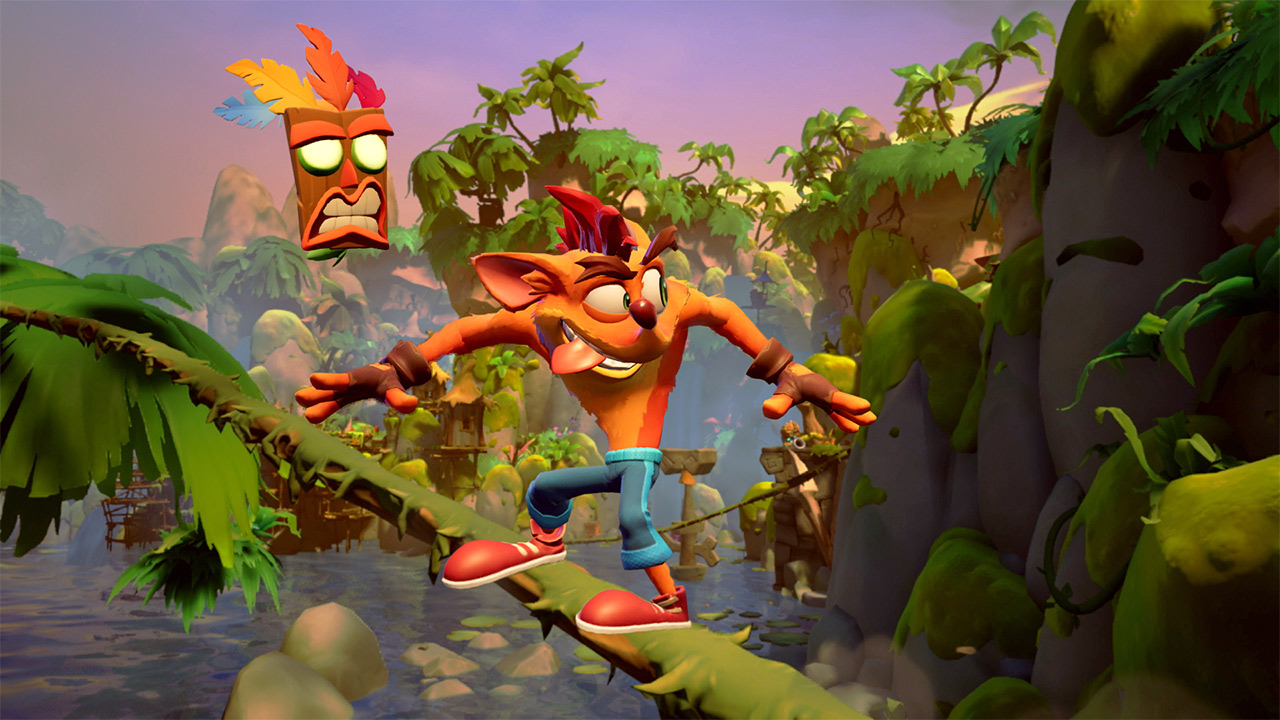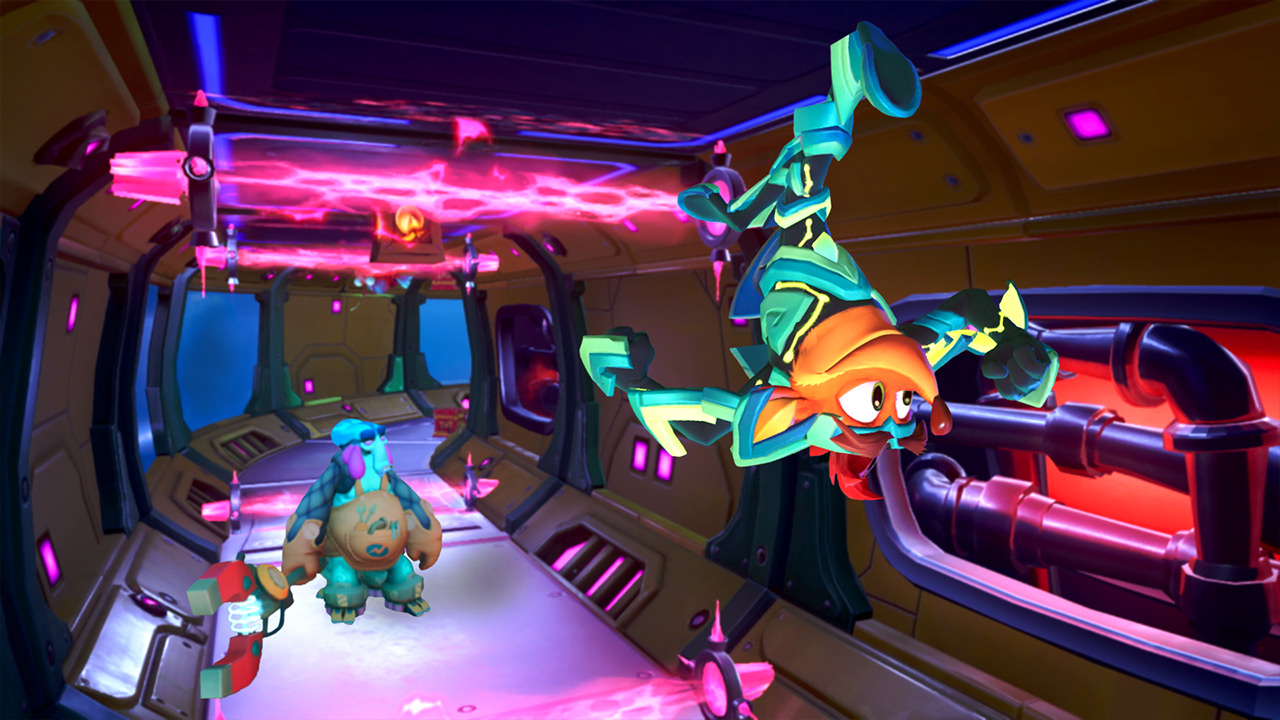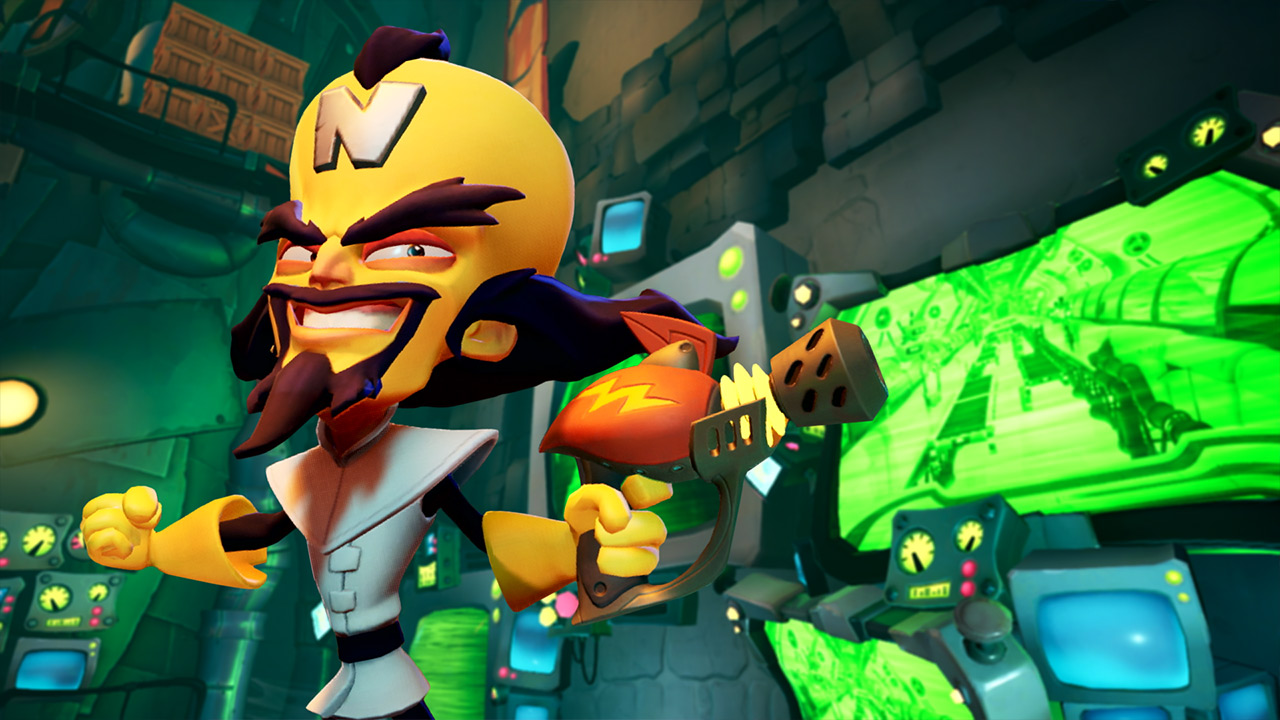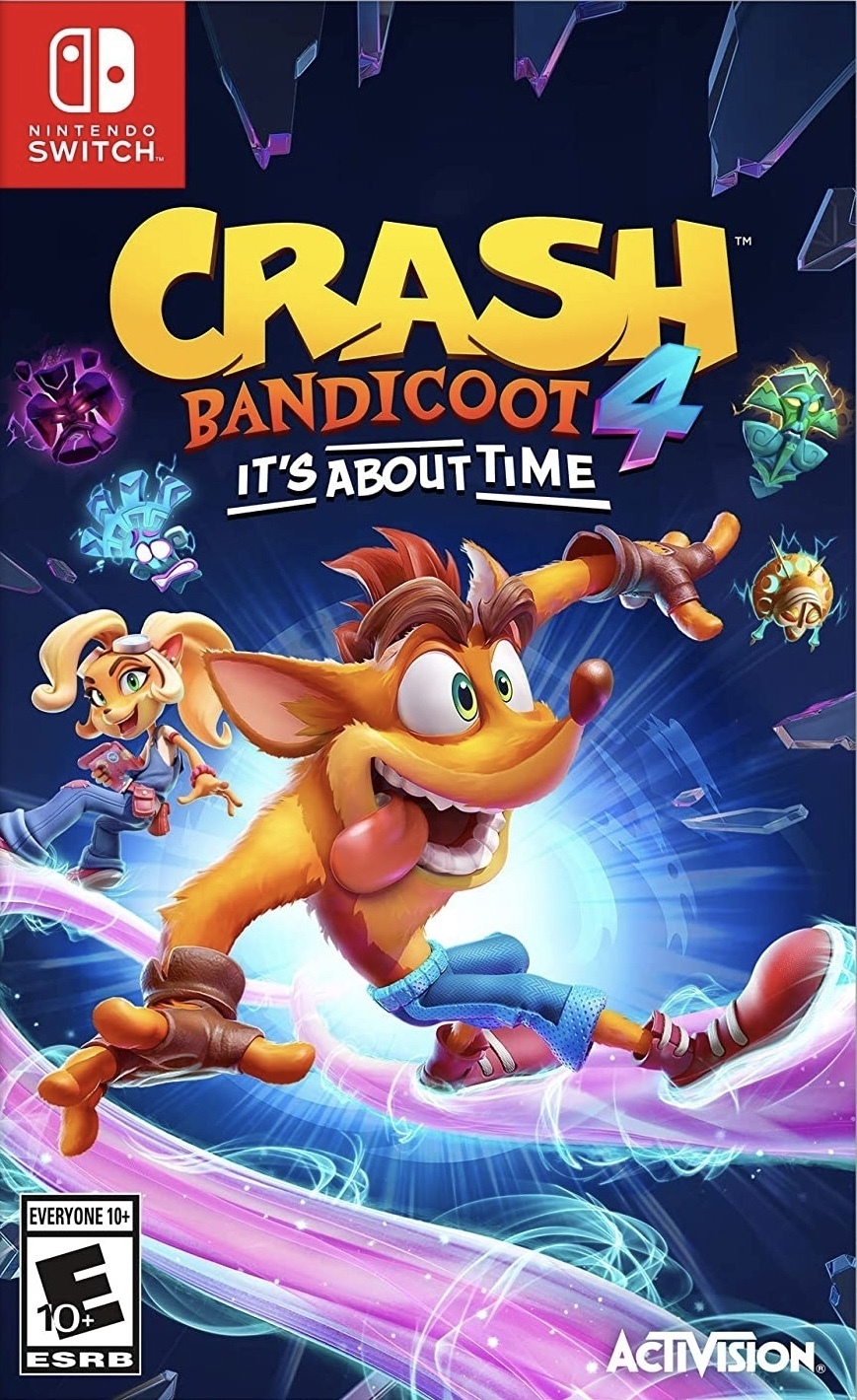In today’s world of remasters and revivals, I might be most grateful for the love that Crash Bandicoot has gotten over the last couple of years. I considered myself lucky when the original trilogy ended up with a remaster, and even luckier that it turned out as great as it did, and when Crash Team Racing got the remake treatment, it was essentially fast-paced wish fulfillment. When I heard that we were getting an all-new, honest-to-goodness sequel to the original trilogy, it felt like my wildest Crash-related dreams were coming true, and now that Crash Bandicoot 4: It’s About Time has landed on my preferred console, the Nintendo Switch, they have.
Gameplay/Difficulty
One of my favorite things about playing Crash Bandicoot 4 has been the fact that it easily lives up to it’s very cheeky subtitle. Set as a direct sequel to Crash Bandicoot 3: Warped and acting as a bit of a soft-reboot of the series, Crash 4 plays like a natural extension of the original trilogy with some modern sensibilities thrown in. New to the series is the default Modern difficulty, doing away with limited lives and game overs of the Crash games of old. Instead, you can die as many times as you like trying to tackle the levels – each death will bring you back to the last checkpoint you hit, but you’ll miss out on one of the level’s Gems if you die more than three times. Fans of the original difficulty don’t need to worry, however, as you can simply set the difficulty to Retro to play with a limited number of lives.
After spending a lot of time with Crash 4 over the weekend, I was more than happy to have the difficulty set to Modern as I played, simply because this game is difficult, very difficult. Early stages are easy enough to complete, but trying to collect all of the Gems per stage is where you’re going to start to sweat. Maybe this is only a testament to my skill, or lack thereof, but simply put, there was no way I was breaking all the crates, collecting the majority of a stage’s Wumpa Fruit, and dying less than three times on my first run through of any of these levels.
Luckily gems carry over between runs, making collecting them a bit easier, but still, you should expect to play many of Crash 4’s stages multiple times if you’re a completionist, because try as you might to stay alive and hit all the crates, there’s no guarantee you won’t miss two or three hiding behind some scenery and have to do it all over again. Later on in the game I found myself trying to hurry through the levels not worrying about collecting gems, and the difficulty just kept rising. Despite ignoring boxes, Wumpa Fruit, and bonus stages, the general platforming itself was taking me several tries to master before I could finally get to the end of these levels.

That’s not to say the platforming isn’t fun, it’s incredibly enjoyable and rewarding, and a lot of that fun comes from the new abilities that Crash and Coco have access to, thanks to a new set of Masks they’ll encounter on their adventure. I was initially hesitant about these new abilities – matter phasing, a powered-up spin, time-slowdown, and gravity flipping – being added to a formula that already works so well, but they added a nice, fresh layer to a lot of the platforming by switching things up so that the challenge of the game never got stale.
With these new abilities bringing a breath of fresh air to the platforming, making most of their respective sections easier to play through early on, it was hard not to notice the difficulty spike between other sections of individual stages, especially later in the game, which ended up getting a tad frustrating. Some areas would be a breeze to find and smash all the crates in, while just after the next checkpoint you could be missing crates entirely thanks to them being hidden just off screen or requiring a considerable amount of precision platforming to reach. Despite the frustration peppered in with these particularly hard sections, finally mastering a tricky spot of a level left me feeling great enough to do it all over again for the next level.
There are tangible rewards for mastering levels too, as completing each stage while collecting a set number of gems will unlock a skin for Crash or Coco, but with a game with this high of a skill ceiling, sometimes the satisfaction of finally nailing it is reward enough. This is a Crash game through and through, and I think die-hard fans of Crash are going to feel right at home making some of these precision jumps.

Visuals
One of the hallmarks of the Crash series, especially since the revival a few years ago, has been how incredibly vibrant Crash’s world is. The vibrancy is turned up a notch in Crash Bandicoot 4, with the colorful environments popping off the screen whether in handheld or TV mode. Crash and Coco also have the aforementioned unlockable skins, and they all look phenomenal. Some of my favorites turn the bandicoots into eye-catching dinosaurs or balloon animals, while others are a bit more understated but still look great. Another way to experience eye-popping visuals in Crash 4 is through the N.Verted levels.

Unlocked after the fourth world, the N.Verted levels mirror already completed stages, but also add fun visual elements and other challenges, like underwater physics, a bright neon overlay, or black and white environments, with every spin adding color to the canvas. N.Verted levels also offer more Gems, which means more opportunities to unlock skins without having to meet every challenge requirement in the early stages. Later stages will require you to collect more gems however, with the final world requiring players to collect every Gem in both the normal mode, and N.Verted.
Fans who experience this game solely on Switch are likely to be pleased, as it was built on Unreal Engine 4 and looks great for what it is. Fans who have played on other consoles before now, however, are going to notice that there had to be some cut corners, with resolution and framerate at the top of the list. Crash 4 on Switch hits 720p when docked, and when played portably the game is aiming for 540p, though some cutscenes and action heavy sections are going to dip lower, and I noticed certain cutscenes gained a dotted, comic-book look in handheld mode. In the framerate department you’ll see it capped at 30fps, though some cutscenes and the loading screens end up looking lower than that, and appear jittery as a result. Despite the Switch version of the game looking visually inferior, I feel like the ability to play Crash 4 on the go more than makes up for it. Again, players who only experience the Nintendo Switch version aren’t going to be hurting for more, since the game still looks great and pops off the screen.
Conclusion
Overall, Crash Bandicoot 4: It’s About Time is a challenging game that’s going to be enjoyed by a lot of people, but it might not please everyone. It’s difficult, sure, but there’s a ton of content here with a lot of replayability. Have I enjoyed everything the game has to offer? Absolutely not, but I will keep coming back to it until I have. While the game loses just a bit of its shine on the Switch, I don’t really feel like I’m missing out on anything of substance. It’s the same game underneath all the bells and whistles, after all, and being able to play it on the go is well worth the trade-off.

System: Nintendo Switch
Release Date: March 11, 2021
Categories: Platformer
Publisher: Activision
Developer: Toys for Bob


